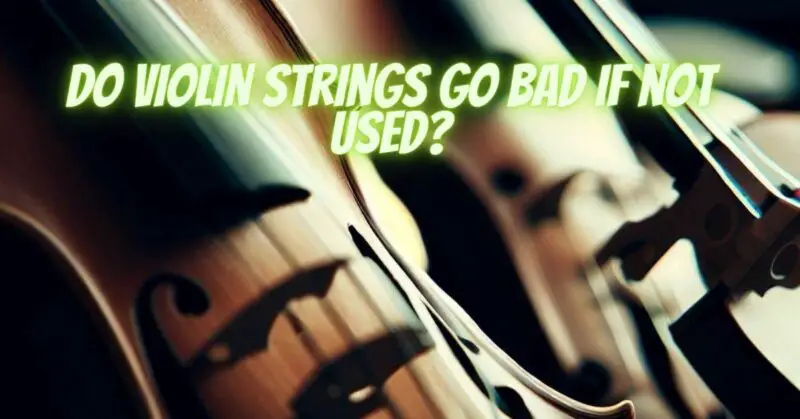Violin strings, like any other musical instrument strings, can experience degradation over time, even if they are not used frequently or at all. While the rate of degradation may be slower for unused strings compared to those that are regularly played, certain factors can contribute to their deterioration. In this guide, we will explore the effects of non-usage on violin strings and provide insights into their longevity when not in active use.
- Material and Construction:
The material and construction of violin strings play a significant role in their durability and susceptibility to degradation, even when not in use. Different string materials, such as gut, synthetic core, or steel, have varying levels of vulnerability to environmental factors. Synthetic core and steel strings are generally more resistant to degradation than gut strings.
- Environmental Factors:
Environmental conditions, such as temperature, humidity, and exposure to light, can impact the lifespan of violin strings, even if they are not actively being played. Strings that are stored in unfavorable conditions, such as high humidity or extreme temperatures, may degrade more quickly. Exposure to direct sunlight can also have a detrimental effect on the strings’ integrity.
- Oxidation and Corrosion:
Over time, violin strings can oxidize and corrode, particularly if they are exposed to moisture or air. This can lead to a loss of tonal quality, responsiveness, and playability. While non-usage may slow down the oxidation and corrosion process, it does not eliminate the possibility of these effects over an extended period.
- Tension Changes:
Strings that are left at a constant tension without any usage or periodic adjustments may experience changes in their tension over time. This can lead to uneven tension across the strings, affecting intonation and playability. It is advisable to periodically check the tension of unused strings and make adjustments if necessary.
- String Performance:
Even if not used, violin strings can still experience a loss in performance over time. They may lose some of their tonal qualities, responsiveness, and playability. When unused strings are eventually installed and played, they may not deliver the desired sound and performance, necessitating replacement.
While non-usage may slow down the degradation process, violin strings can still experience deterioration over time due to factors such as material vulnerability, environmental conditions, oxidation, corrosion, and changes in tension. It is important to store strings properly, in a cool, dry place away from direct sunlight, extreme temperatures, and humidity, to minimize the effects of environmental factors. Regularly inspecting unused strings for signs of wear and degradation is crucial. When using unused strings after an extended period, it is advisable to assess their performance and consider replacing them if necessary. By understanding the potential effects of non-usage and taking proper care of violin strings, you can help ensure their longevity and optimal performance when they are eventually put into active use.


